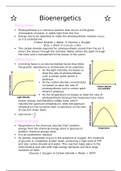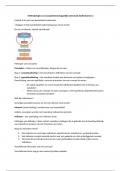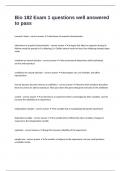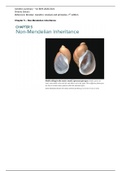Samenvatting
Summary AQA GCSE Biology Bioenergetics (Topic 4) Revision Notes
- Vak
- Instelling
- Boek
These are detailed Revision Notes for Topic Four (Bioenergetics) of AQA GCSE Biology. They are written by me, using a combination of class notes, text books and revision guides. I have also uploaded the other chapters in my store.
[Meer zien]








